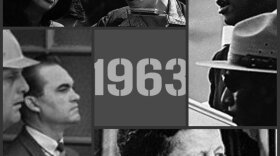-
Local playwright Kathleen Gamble's new play, “We Shall Not be Moved: The Jefferson Bank Protest,” tells the story of a critical period in St. Louis civil rights history.
-
Norman Seay, a civil rights warrior who joined the fight as a teenager and became both infantryman and general in two of the most significant civil rights…
-
This article originally appeared in the St. Louis Beacon, Aug. 30, 2013: About two dozen people, some from as far away as New York, California and North…
-
In the summer of 1963, hundreds of thousands across the nation converged on Washington, D.C. to march for jobs and freedom.Meanwhile, back in St. Louis,…
-
This article first appeared in the St. Louis Beacon: The 2600 block of Washington Boulevard is still remembered as the spot marking the beginning of what…
-
This article first appeared in the St. Louis Beacon, May 16, 2013 - The 2600 block of Washington Boulevard is still remembered as the spot marking the…
-
This article first appeared in the St. Louis Beacon: In 1963, when it appeared that blacks protesting the discriminatory practices at Jefferson Bank and…
-
This article first appeared in the St. Louis Beacon, Aug. 24, 2010 - When Norman Seay leads a gathering to this year's commemoration of the Jefferson Bank…
-
This article first appeared in the St. Louis Beacon, May 4, 2010 - A century after the Civil War, 19-year-old Chris Hexter of St. Louis joined an army of…
-
This article first appeared in the St. Louis Beacon, Feb. 21, 2010 - Much is made of the civil-rights movement in northern cities like New York, Chicago…
Play Live Radio
Next Up:
0:00
0:00
Available On Air Stations






